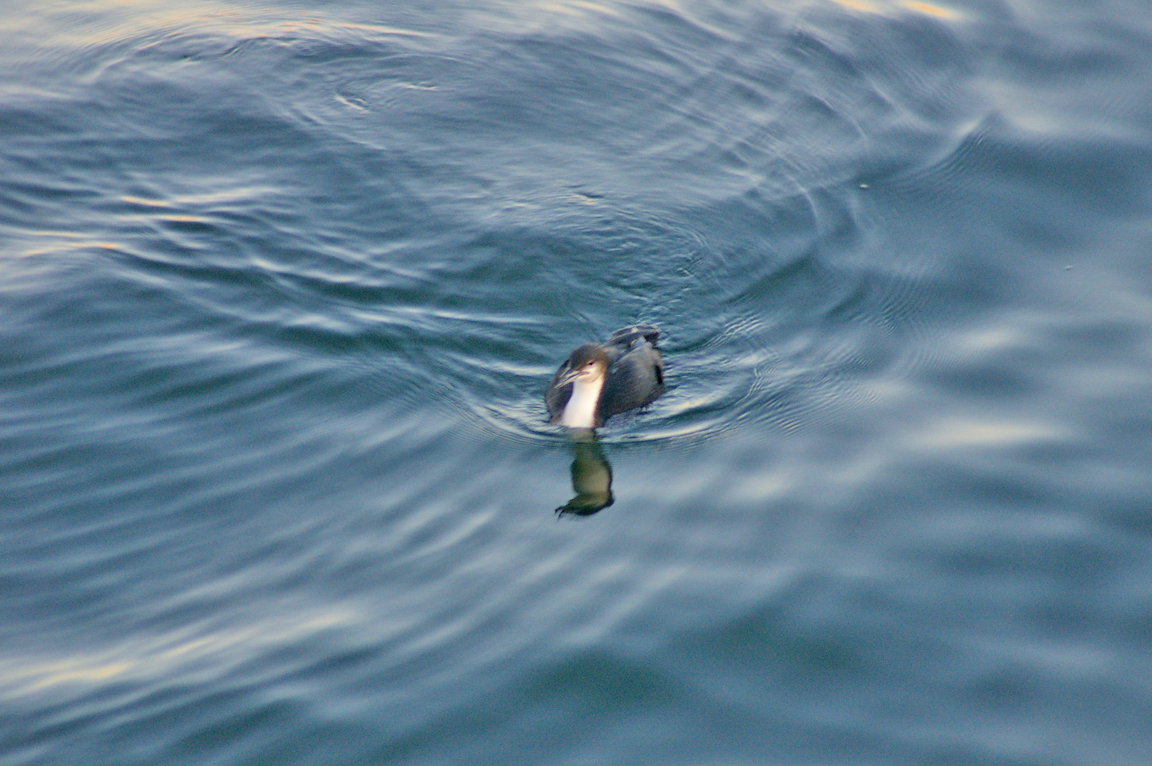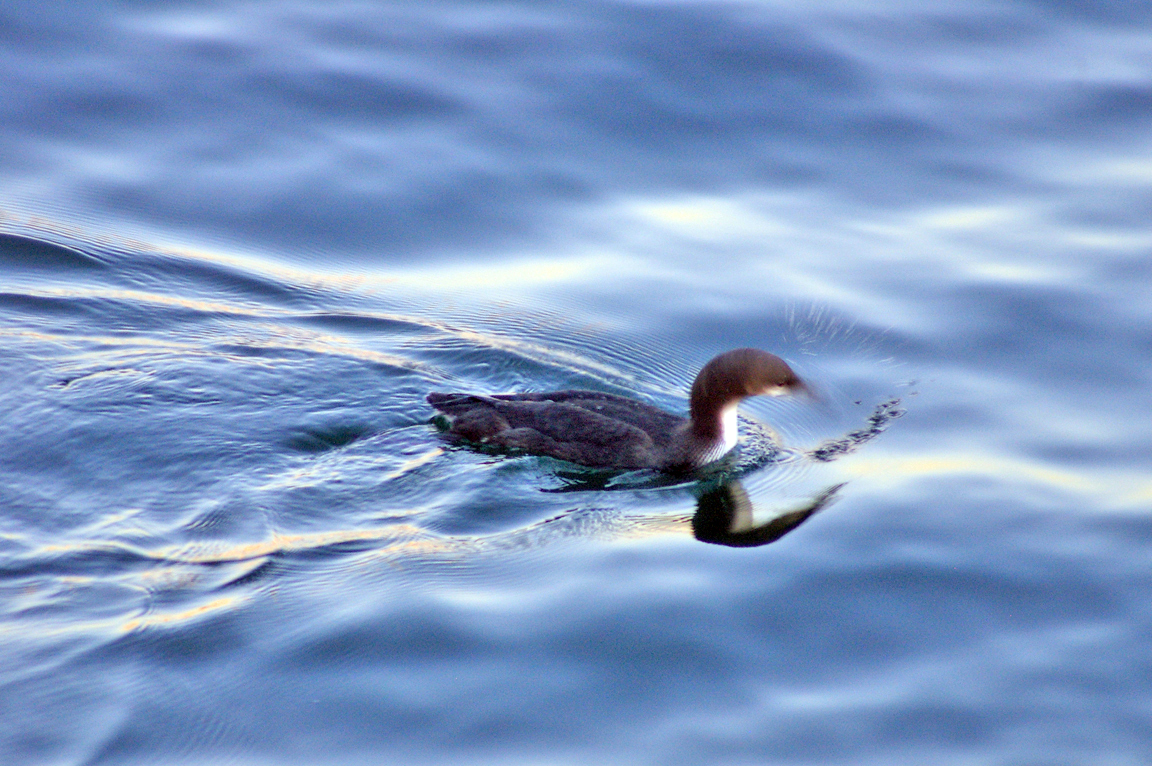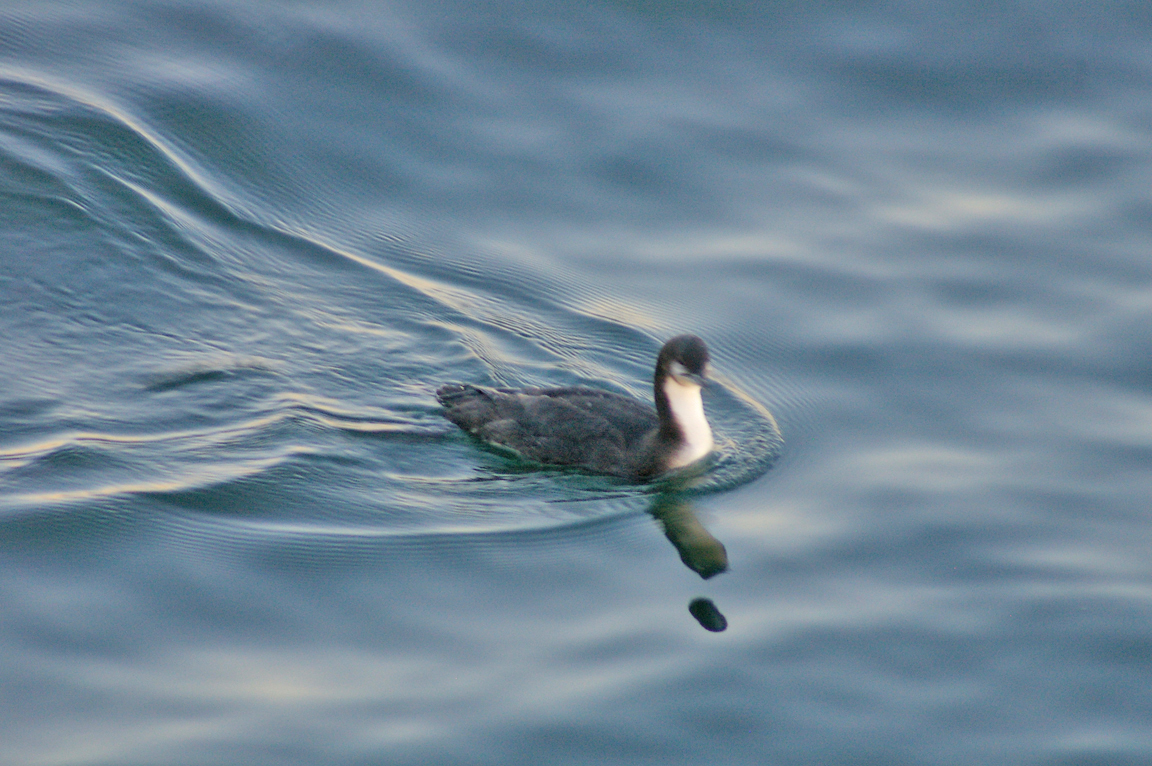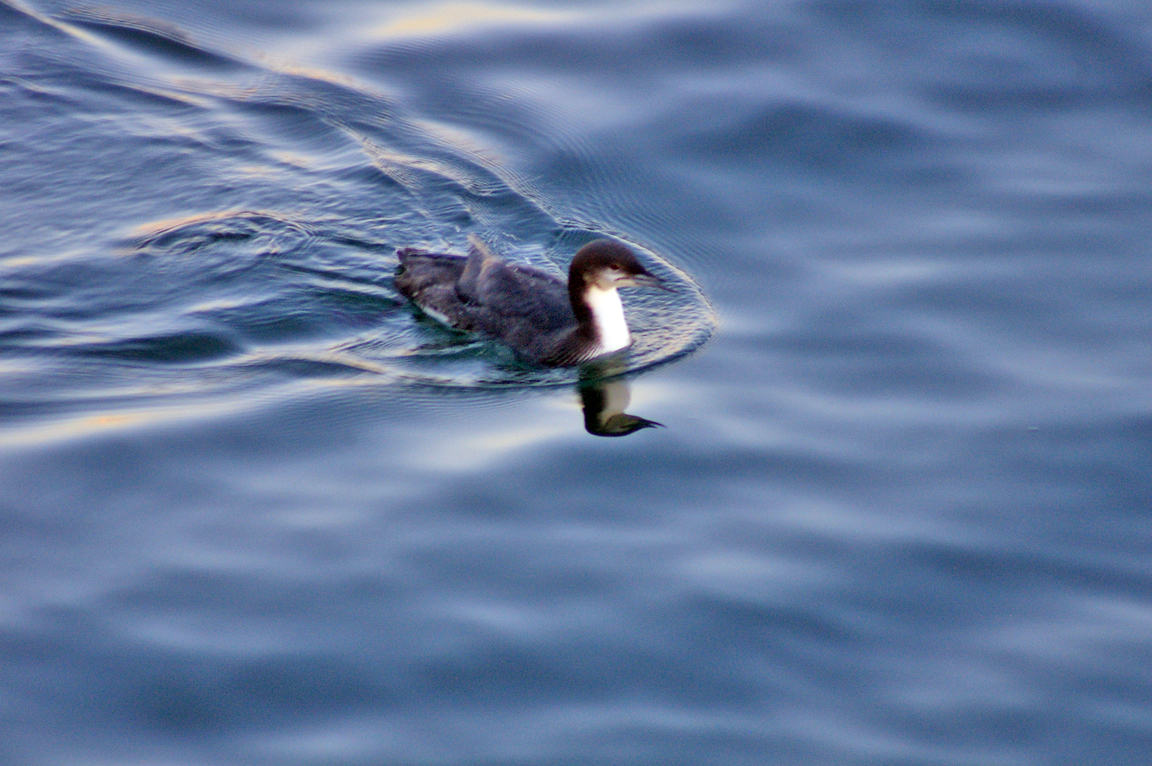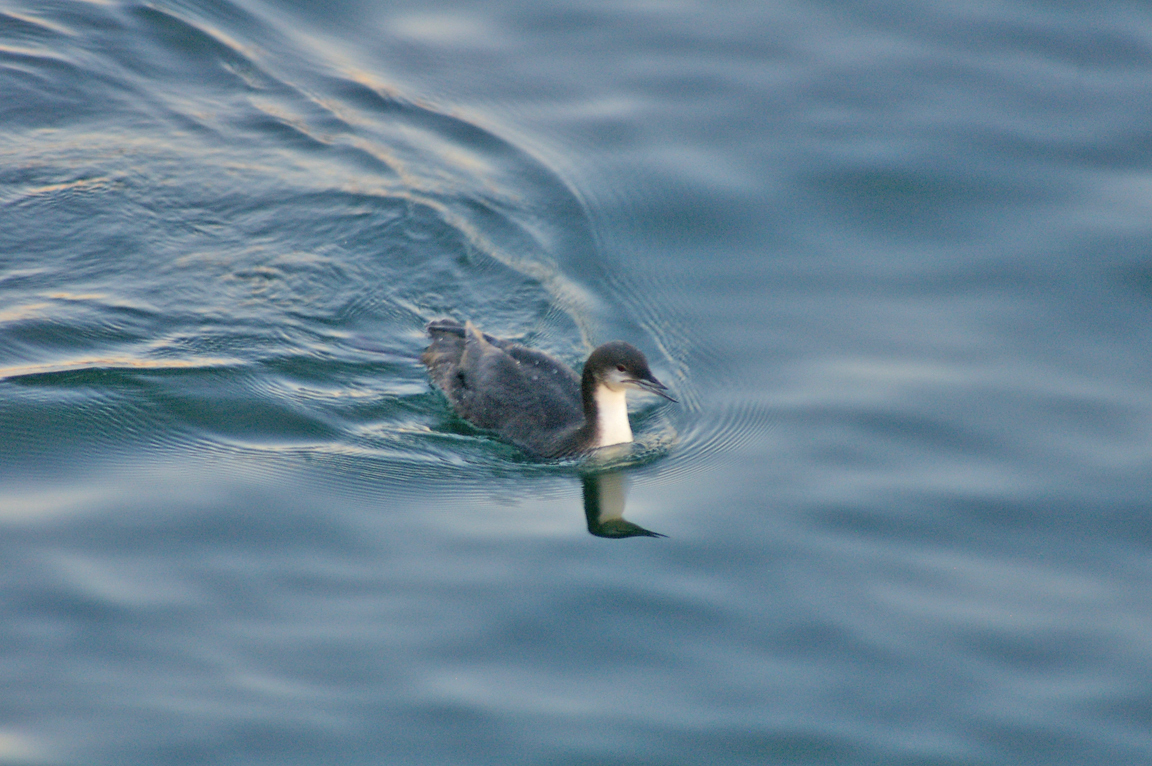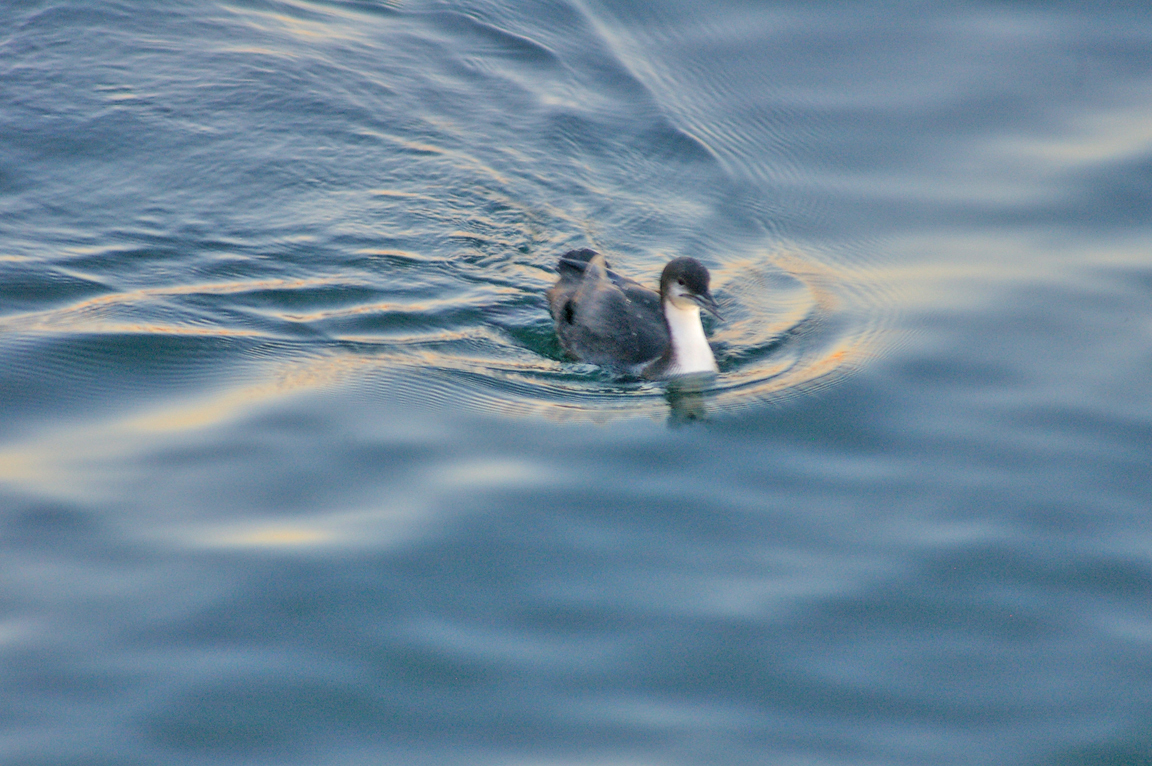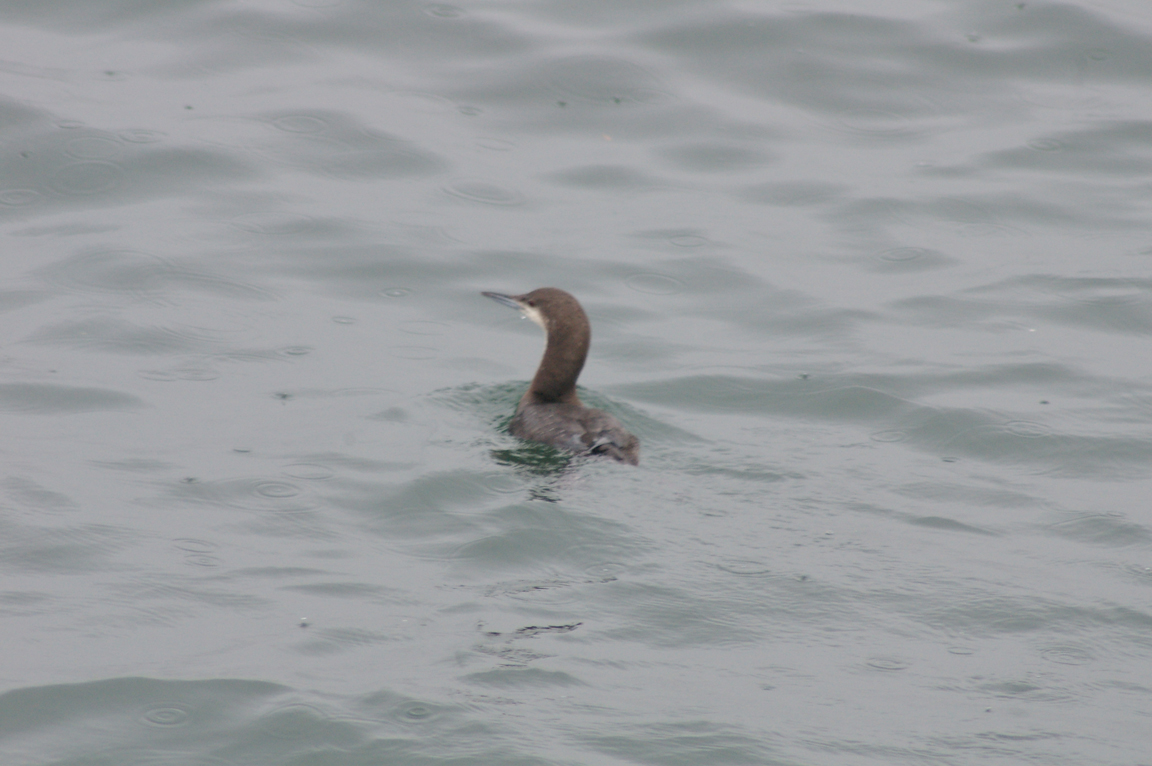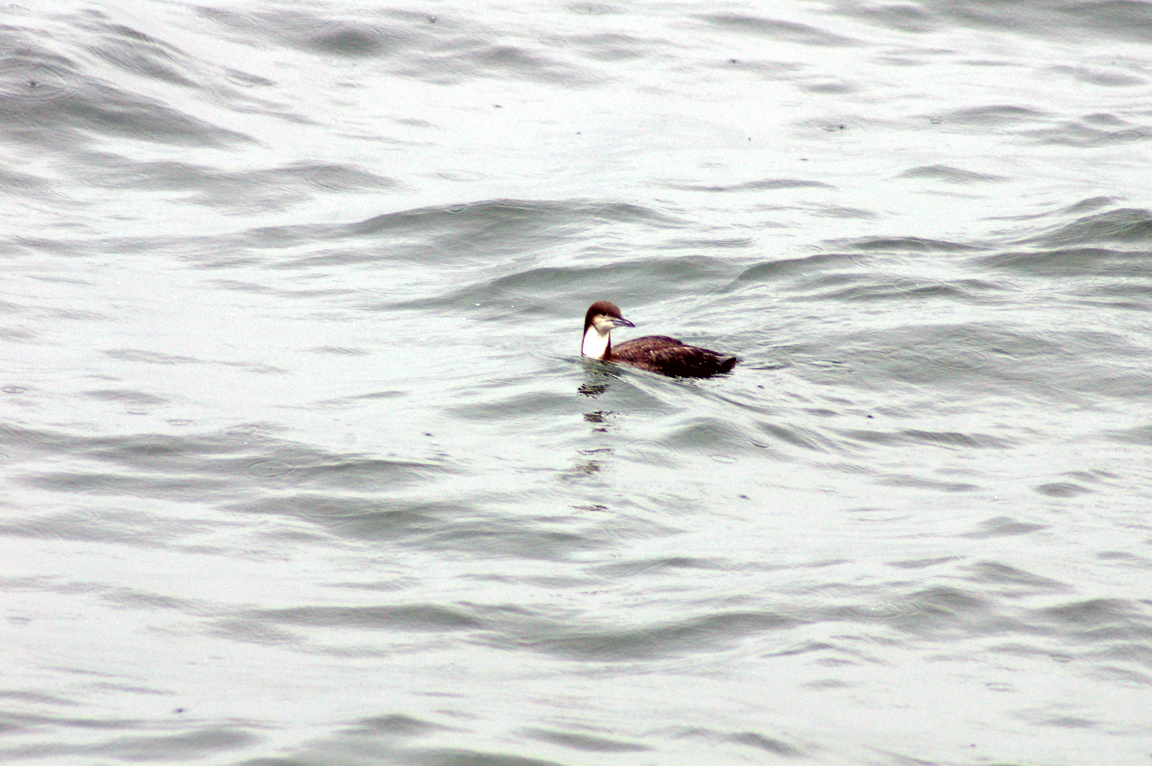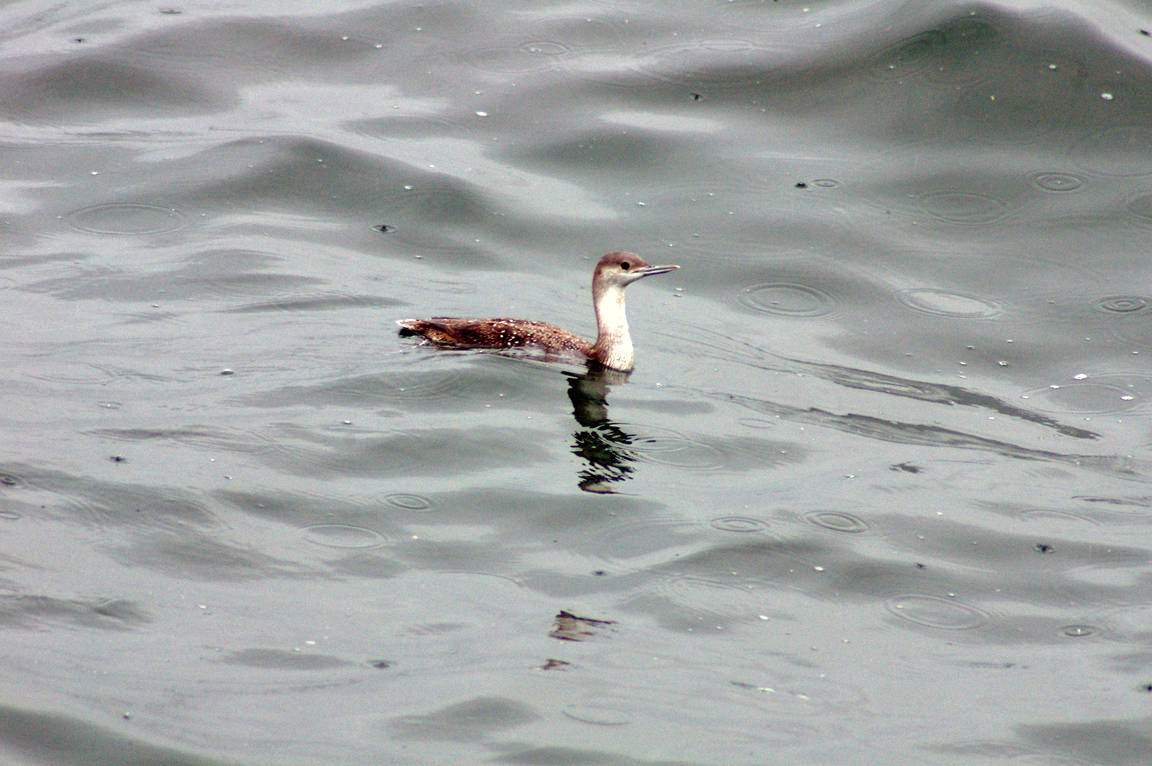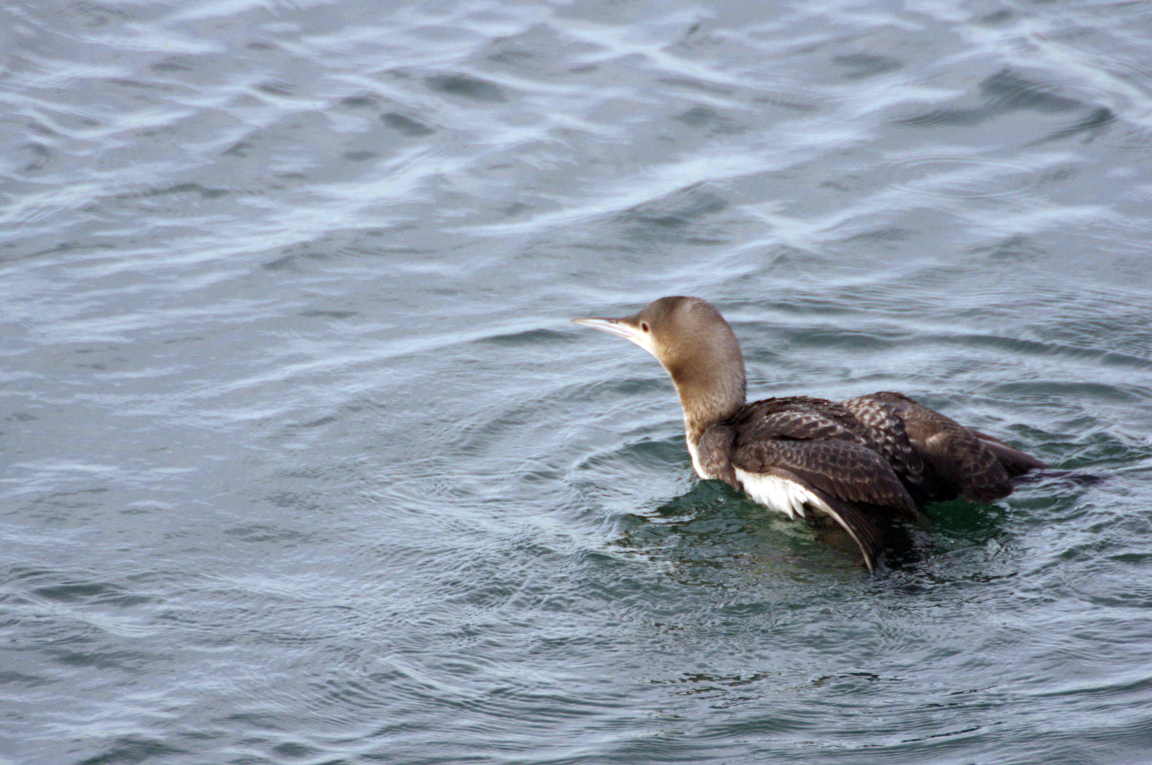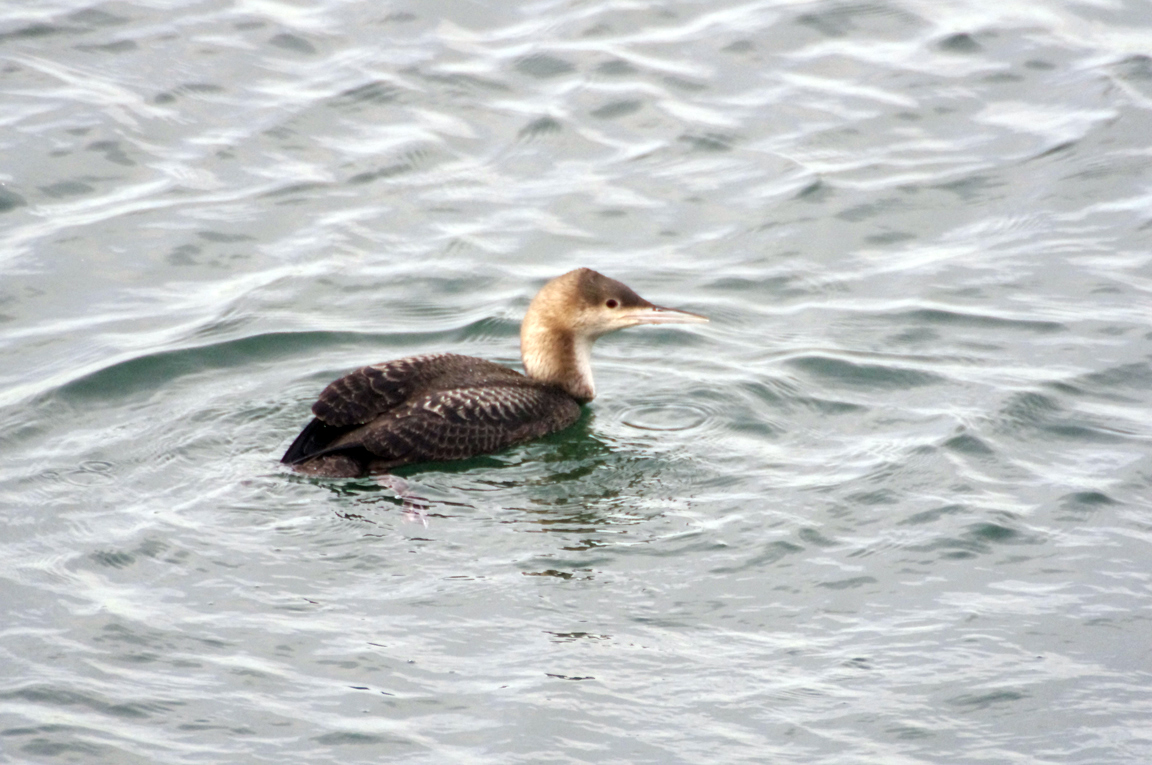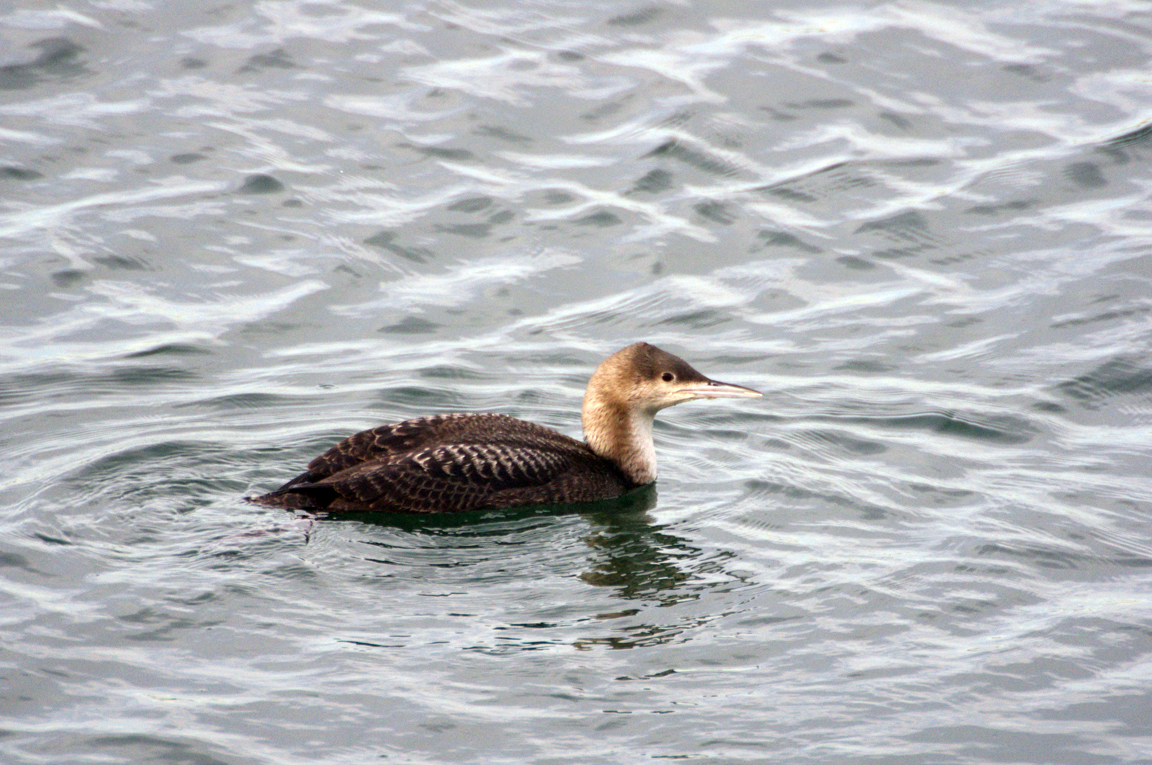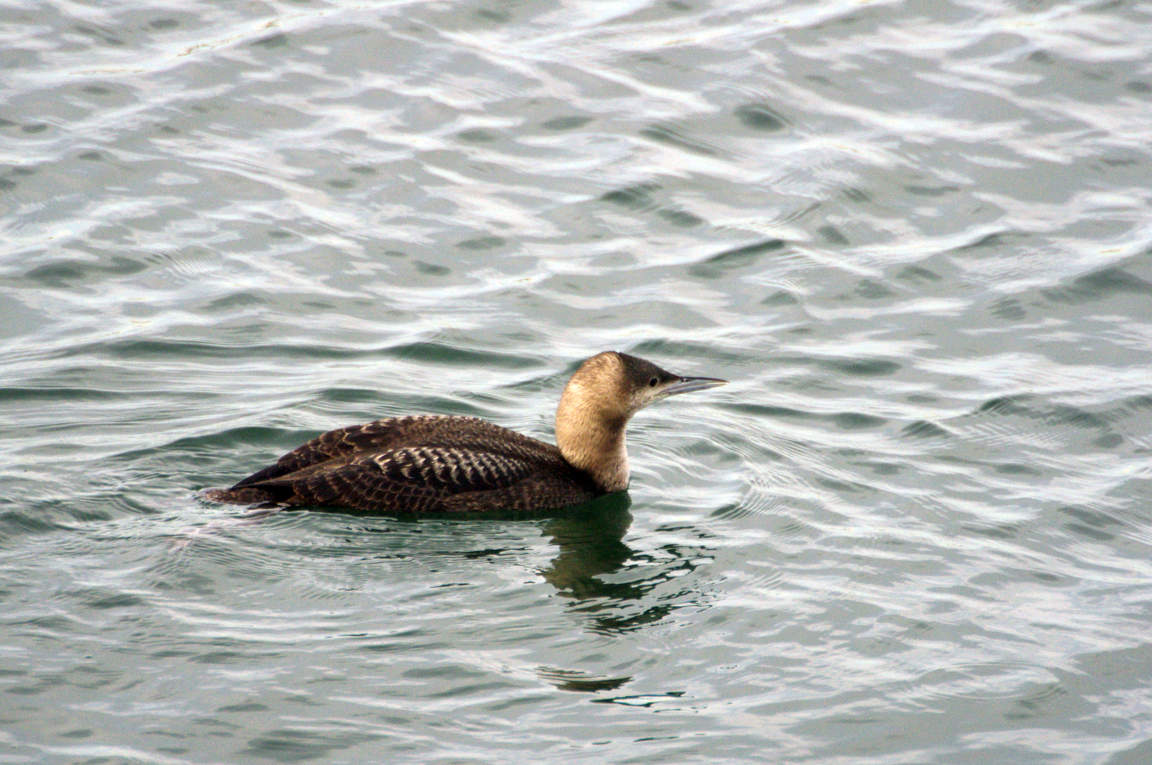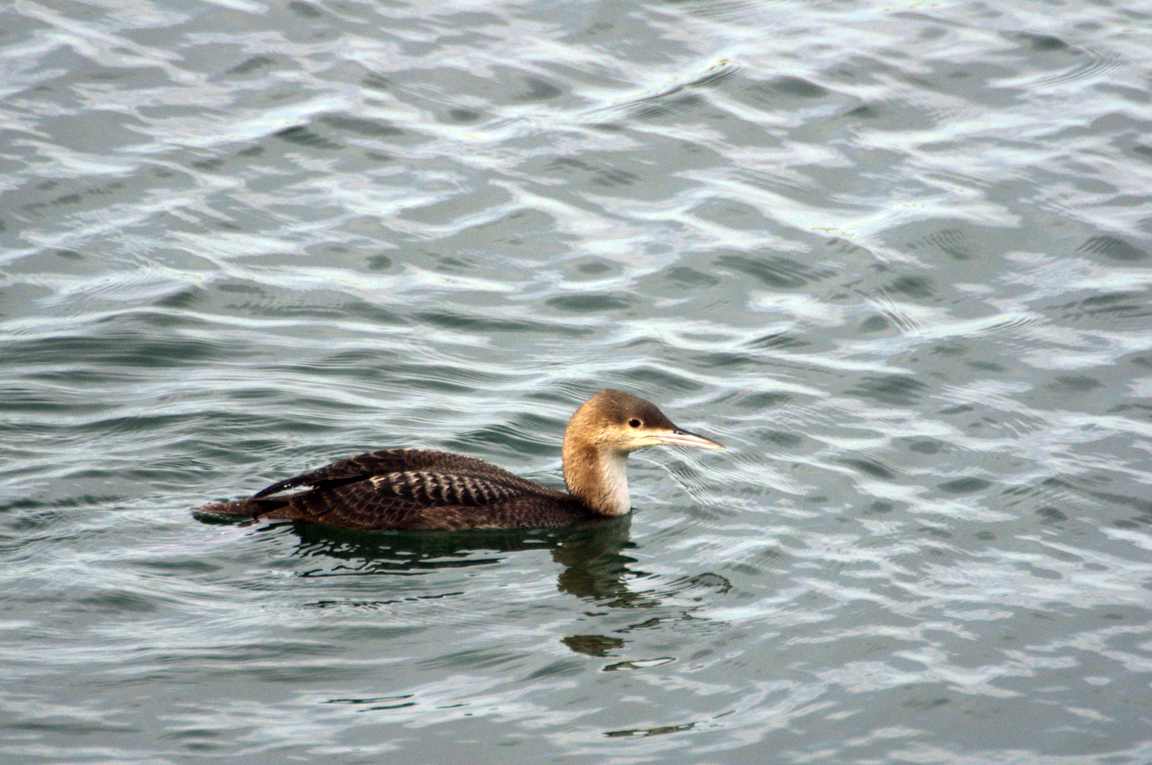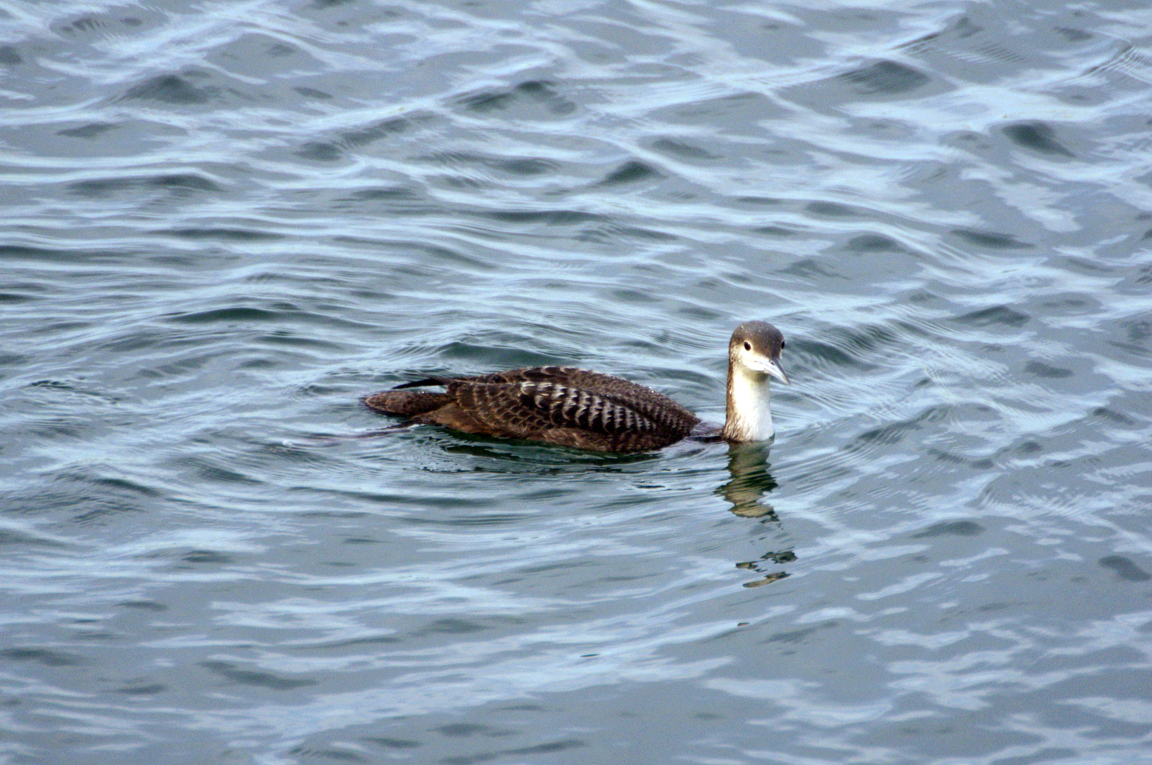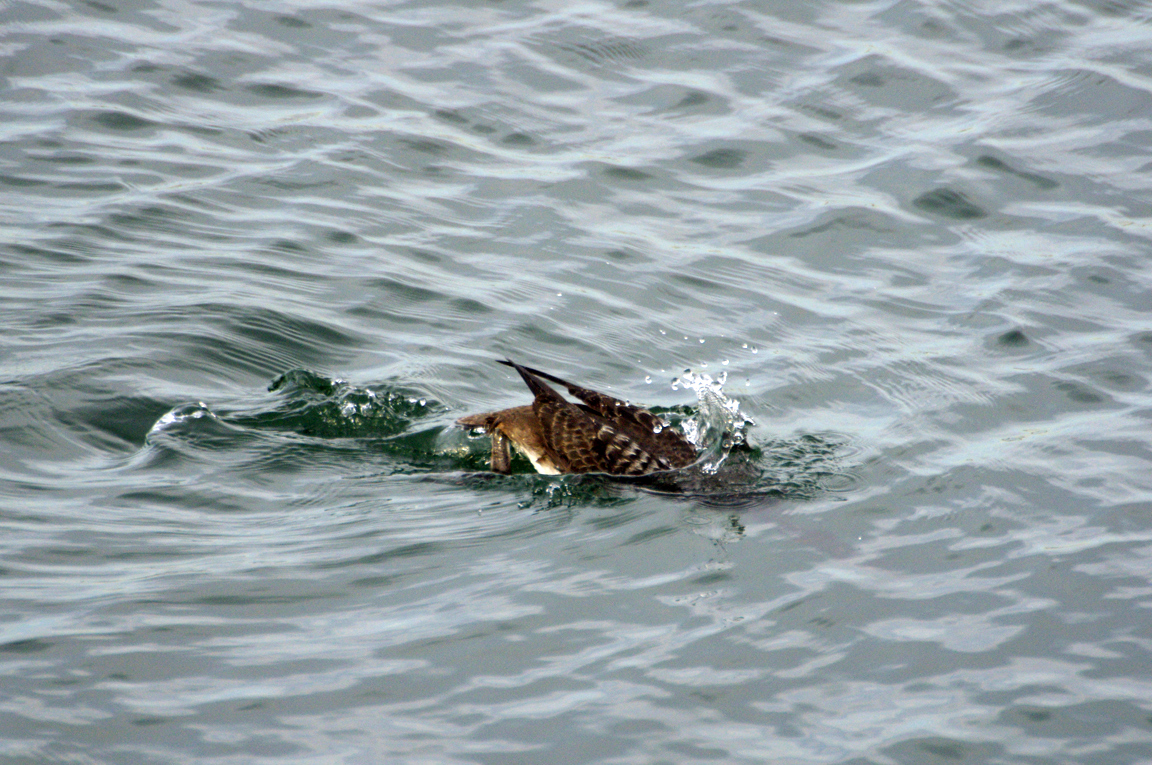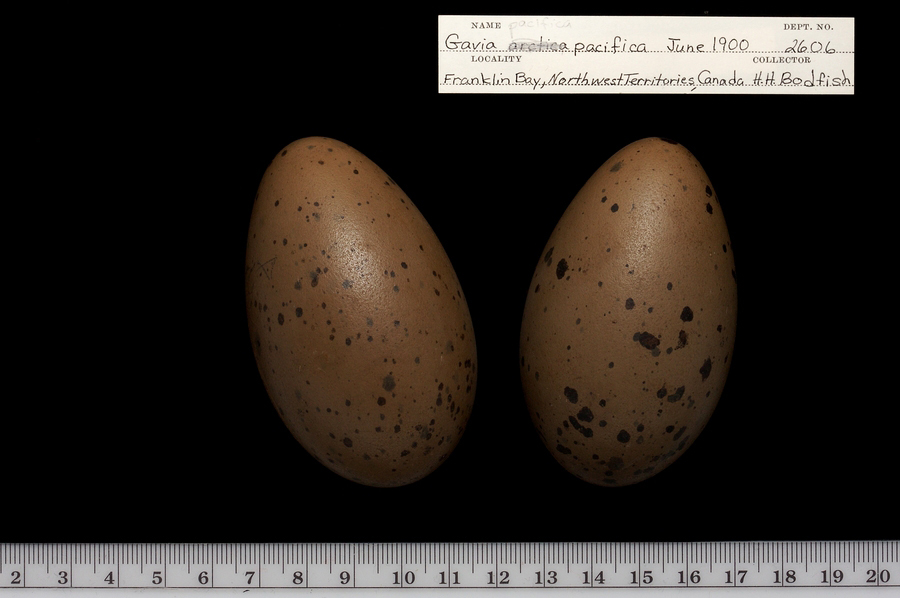|
|
|
 |
Pacific Loon
|
| Gavia pacifica | |
The Pacific Loon is perhaps the most abundant loon in North America. It spends most of the year on the Pacific Ocean, returning to inland Arctic tundra lakes only for three months in summer to breed.
Interesting Information
-
The Pacific and Arctic loons are extremely similar and were formerly considered the same species. Where the two species meet in western Alaska and eastern Siberia, the Arctic Loon has a greenish patch on its throat. Arctic Loons from the rest of Eurasia have purplish throats similar to that of the Pacific Loon.
-
Pacific and Arctic loons in the waters off Japan in late winter forage cooperatively, swimming under and around schools of sand lance (a small fish) and concentrating them into an area about one meter in diameter. Japanese fishermen exploited this habit by fishing for sea bream that gathered to feed on the sand lance. With such assistance from the loons, the fishermen could earn a year's livelihood in February and March alone; as a result, the loons were worshipped as messengers from heaven. Now, this practice has ceased because of unexplained declines in loon populations, collapse of sea bream populations, and adoption of other fishing methods.
-
Like other loons, the Pacific Loon walks extremely awkwardly on land, and cannot take flight from land at all. It requires about 30-50 meters of open water to take flight, flapping and pattering across the surface.
Description
Adult Description
-
Size: 58-74 cm (23-29 in)
-
Wingspan: 110-128 cm (43-50 in)
-
Weight: 1000-2500 g (35.3-88.25 ounces)
-
Large waterbird, medium-sized loon.
-
Long body.
-
Rounded head and nape.
-
Relatively thin, pointed bill.
-
Dark flanks.
Sex Differences
Sexes alike in plumage, male larger.
Immature
Similar to nonbreeding adults; dark gray upperparts and white throat, chest, and belly.
Breeding (Alternate) Plumage
Pale gray on the crown and nape. Fine white stripes on the sides of the neck and chest. Chin and throat dark blackish with purplish sheen. Back black with bold white spots. Bill black. Eyes red. Belly white.
Nonbreeding (Basic) Plumage
Plain brownish-gray above and white below, with a straight border between dark coloration on the hindneck and white on the foreneck. Often shows a dark line running across the upper throat under the chin, and another dark band across the vent.
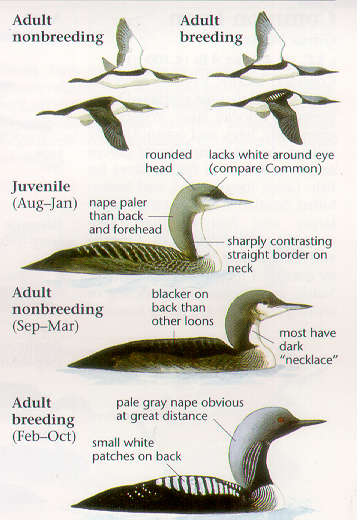
Photo taken from: The Sibley Field Guide by David Allen Sibley
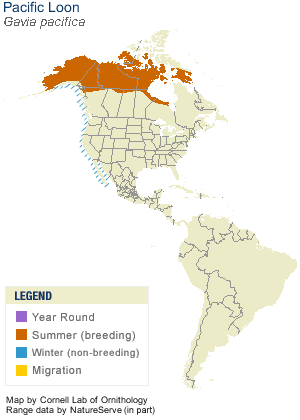
© 2003 Cornell Lab of Ornithology
|
Habitat |
|
Breeds on freshwater tundra lakes. Rests on open ocean during migration. Winters on ocean waters near coast, and sometimes on bays or estuaries. |
|
Behavior |
|
Dives after prey, tracking it visually, and seizing it with bill. |
|
Food |
|
Fish and aquatic invertebrates. |
Taxonomy
| Kingdom: | Animalia |
| Phylum: | Chordata |
| Subphylum: | Vertebrata |
| Class: | Aves |
| Order: | Gaviiformes |
| Family: | Gaviidae |
| Genus: | Gavia |
| Species: | Gavia pacifica |
Similar Species |
|
|
Bird Sound |
|
Call is a hoarse croak, often repeated. Also issues a plaintive wail. |
|
Eggs look like this |
|
Photo taken from: ARCTOS Collaborative Collection Management Solution |
